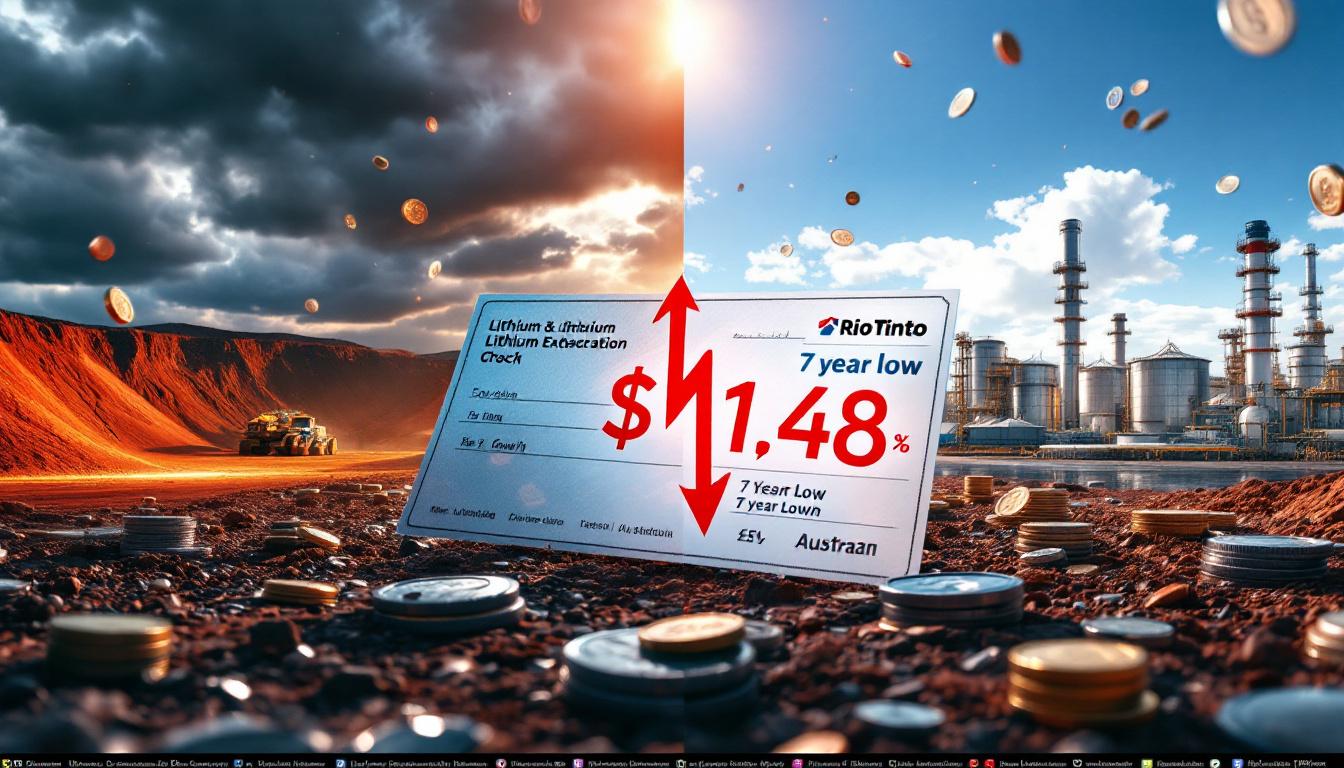Understanding Today's Crude Oil Price Movements
Global crude oil prices operate in a complex ecosystem of supply, demand, geopolitical tensions, and market psychology. Today's price movements reflect both immediate market reactions and structural shifts reshaping the energy landscape. The WTI crude benchmark currently trades at $65.45 per barrel, while Brent crude stands at $66.97, with both showing modest gains in recent trading sessions.
The interplay between these factors creates the daily price fluctuations that energy traders, analysts, and consumers carefully monitor. Understanding these movements requires examining multiple variables simultaneously across global markets.
Key Price Indicators and Recent Trends
Current crude oil prices show modest upward momentum across major benchmarks:
| Benchmark | Price | Change |
|---|---|---|
| WTI Crude | $65.45 | +0.52% |
| Brent Crude | $66.97 | +0.34% |
| Murban Crude | $68.32 | +0.41% |
| Natural Gas | $3.337 | -3.44% |
These figures represent a market in transition, with crude oil finding support after recent declines while natural gas continues to face downward pressure.
How Do Regional Oil Benchmarks Compare Today?
Regional price differentials provide crucial insights into global oil market dynamics, transportation bottlenecks, and quality premiums. These differences don't just reflect geographic location—they embody complex economic relationships between producing regions and consumer markets.
Middle Eastern Crude Benchmarks
Middle Eastern grades currently show mixed performance:
| Benchmark | Price | Change |
|---|---|---|
| Murban Crude | $68.32 | +0.41% |
| Iran Heavy | $64.96 | -1.16% |
| Basra Light | $71.69 | -4.78% |
| OPEC Basket | $68.35 | +0.32% |
The substantial decline in Basra Light is particularly noteworthy, reflecting quality concerns and changing buyer preferences for Iraqi exports.
North American Crude Varieties
North American crude varieties demonstrate the impact of regional infrastructure and quality differentials:
| Benchmark | Price | Change |
|---|---|---|
| Louisiana Light | $68.96 | +0.32% |
| Western Canadian Select | $52.76 | -0.77% |
| Canadian Condensate | $67.26 | -0.61% |
| Eagle Ford | $61.59 | +1.22% |
The significant discount on Western Canadian Select highlights the persistent transportation constraints affecting Canadian producers, despite expanded pipeline capacity in recent years.
Price Spread Analysis
The current Brent-WTI spread of $1.52 sits substantially below historical averages, reflecting improved export infrastructure from North America and changing global trade war oil movements. This narrower spread indicates that U.S. crude can more efficiently reach international markets, reducing the historical discounts American producers once faced.
Historically, this spread has fluctuated between $1-20 depending on market conditions, with wider spreads typically seen during periods of U.S. production growth or export constraints.
What's Behind Today's Market Sentiment?
Market sentiment forms the psychological foundation for price movements, often anticipating fundamental shifts before they materialize in supply-demand data. Today's cautiously bullish sentiment reflects several counterbalancing factors.
Geopolitical Developments
Several key geopolitical developments are influencing today's crude oil prices:
- Iraq has emerged as the top OPEC crude supplier to the United States, shipping nearly 7 million barrels in May—a significant shift in traditional trading patterns
- Middle East oil disruption risk has recently decreased to approximately 4%, down from double-digit figures earlier this year
- Iran-based social media campaigns targeting Saudi Aramco highlight ongoing regional tensions beneath the surface calm
- Recent Russia-Ukraine tensions have not resulted in uranium leaks, reducing immediate environmental concerns that had weighed on market sentiment
These developments represent a geopolitical risk premium that's currently diminishing but could rapidly reappear with new developments.
Supply Factors Influencing Today's Prices
Current supply dynamics show a market that remains well-supplied despite production constraints:
- U.S. crude oil production reached record levels in April despite tightening refining margins, demonstrating the resilience of American producers
- OPEC+ voluntary output cuts continue to provide price support around the $65-70 range
- Iraq reduced production by 50,000 barrels per day to 3.93 million bpd in May, below its target of 4.049 million bpd, showing commitment to production discipline
- First cargo shipment from LNG Canada marks significant expansion in North American export capacity
- Equinor's $1.3 billion investment to expand Europe's biggest oilfield signals confidence in long-term demand
"Iraq's ongoing production discipline represents a significant shift for a country that has historically struggled with quota compliance. Their current export success to the U.S. market may reinforce this newfound commitment to OPEC+ agreements." – Energy analysts at OilPrice.com
How Are Demand Dynamics Shaping Oil Markets?
Demand patterns ultimately determine price direction, with shifts in consumption trends playing out across different timeframes. Current price movements reflect both immediate consumption patterns and longer-term structural changes.
Regional Demand Indicators
Regional demand patterns show shifting trade flows and strategic positioning:
- India has doubled U.S. oil imports in what appears to be a politically motivated diversification strategy
- Saudi Aramco is set to raise oil prices to Asia amid strong demand signals, suggesting confidence in continued consumption growth
- Recent increases in Asian oil imports may not necessarily indicate stronger underlying demand but could reflect strategic stockpiling
- U.S. utilities face peak demand uncertainty with the ongoing data center construction boom creating unprecedented power consumption forecasts
These regional demand shifts highlight how political considerations increasingly influence energy trade flows, sometimes overriding pure economic calculations.
Transportation and Refining Demand
Downstream indicators provide insight into consumer-level demand and refining economics:
- U.S. gasoline prices have fallen to $3.14 ahead of the July 4th holiday as Middle East risks recede, potentially stimulating summer driving demand
- Oil tanker rates have retreated as tensions in the Middle East cool, reducing shipping costs but reflecting lower perceived risk premiums
- Refining margins have tightened despite record U.S. crude production, suggesting potential demand weakness in finished petroleum products
The disconnect between strong crude production and tightening refining margins represents a warning sign that end-user demand may not be keeping pace with available supply.
What Technical Indicators Should Traders Watch?
Technical analysis provides a framework for understanding potential price movements based on historical patterns and market positioning. Current technical signals suggest a market searching for direction.
Support and Resistance Levels
Key technical levels frame the current trading range:
- WTI crude faces immediate resistance at $66.50, with stronger resistance at $68.00
- Support levels for WTI appear at $64.00 and $62.50
- Brent crude encounters resistance at $68.00, with support at $65.50
Breaking through these levels could trigger accelerated moves in either direction as algorithmic trading systems respond to technical signals.
Market Positioning
Institutional and retail positioning provides insight into potential price pressures:
- Hedge funds have reduced exposure to energy stocks amid the recent oil price slump, indicating waning confidence in the sector
- Institutional positioning shows reduced long exposure compared to previous months, suggesting caution about upside potential
- Retail trader sentiment remains mixed with slight bearish bias, often a contrarian indicator for market direction
These positioning indicators suggest limited conviction among market participants, creating potential for increased volatility if fundamental catalysts emerge.
How Are OPEC+ Decisions Affecting Current Prices?
OPEC+ production policies remain a primary driver of global oil price movements, with the organization's decisions creating the framework within which other market forces operate.
Recent OPEC+ Developments
Internal dynamics within OPEC+ continue to shape market expectations:
- Kazakhstan's oil production has reached an all-time high, creating tensions within OPEC over quota compliance
- Iraq, Kazakhstan, and Russia have historically exceeded their production quotas, undermining collective output discipline
- OPEC+ voluntary output cuts are providing price support near $80 per barrel
- Saudi Arabia maintains significant influence over global oil prices through production adjustments, frequently serving as the swing producer
These dynamics highlight the internal tensions within OPEC+ as member countries balance individual economic needs against collective price support objectives.
Compliance and Compensation
OPEC+ discipline mechanisms continue to evolve:
- Iraq is currently compensating for previous overproduction by reducing output below its official quota
- OPEC oil output increases have fallen short of targets due to capacity constraints in several member countries
- Poland's Orlen has ended Russian oil purchases, reflecting broader geopolitical realignments that impact OPEC+ market share
The compensation mechanism, where countries make up for past overproduction with deeper cuts later, remains crucial to OPEC+'s credibility but faces ongoing implementation challenges.
What Economic Indicators Are Influencing Oil Markets?
Broader economic factors provide essential context for oil price movements, connecting energy markets to macroeconomic trends and financial flows.
Global Economic Signals
Several economic developments are influencing energy markets:
- Data center construction boom creates uncertainty for energy demand forecasting, with potential for significant increases in electricity consumption
- Oil-rich Alberta has forecast an unexpected budget surplus, highlighting fiscal benefits of higher prices for producing regions
- Sudan and South Sudan are clashing over oil export fees, reflecting regional economic tensions that could impact production
- Australia's east coast faces an unexpected gas shortage, impacting regional energy markets and highlighting infrastructure constraints
These developments illustrate how energy markets increasingly interconnect with technology deployment, regional politics, and infrastructure constraints.
Investment and Corporate Activity
Corporate decisions signal longer-term market expectations:
- UK regulator has approved a $33 billion investment in gas and power grids, indicating confidence in fossil fuel infrastructure
- Shell has addressed BP merger speculation, highlighting potential industry consolidation as companies adapt to energy transition pressures
- Santos has granted ADNOC six weeks for $19 billion takeover review, reflecting continued interest in fossil fuel assets
- Centrica is eyeing a major stake in UK nuclear power project, signaling diversification strategies among traditional energy companies
These investment decisions reflect corporate strategies balancing between maximizing returns from existing fossil fuel assets while positioning for energy transition opportunities.
How Are Alternative Energy Developments Affecting Oil Markets?
The ongoing energy transition influences oil market sentiment and long-term price expectations, creating a complex interplay between traditional and emerging energy systems.
Clean Energy Policy Developments
Recent policy shifts impact the pace of energy transition:
- Clean energy provisions were gutted in a last-minute rewrite of a $1.2T Senate tax bill, potentially slowing renewable deployment
- UK has scrapped a $34 billion Morocco-linked subsea power cable megaproject, highlighting challenges in cross-border renewable integration
- Spain's grid operator has vowed record investments after a recent blackout, emphasizing infrastructure resilience concerns
- U.S. has eased ethane export rules for China, potentially affecting petrochemical markets and creating new demand sources
These policy developments illustrate the uneven and sometimes contradictory progress of energy transition efforts across different jurisdictions.
Energy Infrastructure Investments
Infrastructure decisions create the physical framework for future energy flows:
- U.S. natural gas companies are exploring new Appalachia pipelines, betting on continued fossil fuel relevance
- Enbridge has stated that Canada can't build new pipelines without legislative changes, highlighting regulatory constraints
- Shell has boosted natural gas production at Norway's Ormen Lange field, reinforcing natural gas as a transition fuel
- Russia's Arctic LNG 2 project shows signs of life despite sanctions, demonstrating the resilience of fossil fuel development
These infrastructure investments highlight the continued commitment to fossil fuel development even as energy transition accelerates, creating potential for future oversupply if demand peaks earlier than expected.
What's the Outlook for Crude Oil Prices?
Current market conditions suggest several potential scenarios for future price movements, with both bullish and bearish factors in play.
Short-Term Price Drivers
Several factors will influence prices in coming weeks:
- U.S. Strategic Petroleum Reserve refill has been pushed back seven months, reducing near-term buying pressure
- Geopolitical risk premium has diminished as Middle East tensions cool, but remains subject to rapid reassessment
- Seasonal demand patterns suggest potential support during summer driving season in the Northern Hemisphere
- OPEC+ production decisions will remain critical for price stability, with any signs of quota non-compliance likely to pressure prices
The balance between these factors suggests continued range-bound trading unless significant surprises emerge from either supply or demand.
Long-Term Market Trends
Structural shifts are reshaping energy markets:
- U.S. and Russia are competing for influence in energy-rich Turkmenistan, highlighting the geopolitical importance of Central Asian resources
- Russia is challenging U.S. influence in Mexico's energy sector, creating new trade and investment patterns
- China has launched Phase 2 of a deep-sea gas field adding 4.5BCM to supply, strengthening domestic energy security
- BYD is cutting production despite strong sales, potentially signaling demand concerns in the electric vehicle sector
These long-term trends suggest an energy landscape increasingly shaped by geopolitical competition and technological disruption, creating new risks and opportunities for market participants.
FAQs About Today's Crude Oil Prices
Why are WTI and Brent crude prices different?
WTI (West Texas Intermediate) and Brent crude represent different quality specifications and geographic origins. WTI is primarily produced in the U.S. and stored in Cushing, Oklahoma, while Brent comes from North Sea oil fields. The price differential reflects transportation costs, quality differences (WTI is lighter and sweeter), and regional supply-demand dynamics. Currently, the narrower-than-historical spread of $1.52 indicates improved export capabilities from North America.
How do OPEC+ production decisions impact oil prices?
OPEC+ production quotas directly influence global oil supply. When the organization reduces output, as seen in recent voluntary cuts, prices typically rise due to tighter supply. Conversely, when production increases, prices often fall. Market reactions also depend on compliance levels among member countries, with Iraq's recent production discipline (reducing to 3.93 million bpd) providing evidence of commitment to collective agreements.
What causes daily fluctuations in crude oil prices today?
Daily price movements result from multiple factors including:
- Weekly inventory reports from the U.S. Energy Information Administration
- Economic data releases affecting demand expectations
- Geopolitical developments, particularly in major producing regions
- Currency fluctuations, especially in the U.S. dollar
- Technical trading patterns triggering algorithmic responses
Unexpected news can trigger significant volatility within a single trading session, sometimes moving prices 2-3% on headline risk alone.
How do U.S. strategic petroleum reserves affect oil prices?
The U.S. Strategic Petroleum Reserve (SPR) serves as a buffer against supply disruptions. Large releases from the SPR can temporarily depress prices, while repurchases can provide price support. Recent postponement of SPR refilling by seven months has reduced potential upward price pressure. The SPR currently holds approximately 40% less oil than its peak capacity, creating potential for significant market impact when refilling eventually begins.
What role does Alaska play in global oil markets?
Alaska remains an important oil-producing region, particularly within the North American market. Recent Alaska drilling policy changes have impacted production outlook, with potential implications for U.S. energy security. Meanwhile, the ongoing US rig count decline highlights broader challenges in North American production growth despite favorable oil price rally insights from market analysts. Analysts at Market Index continue to monitor these regional developments for their impact on global crude oil prices today.
Want to Profit from the Next Major Mineral Discovery?
Discovery Alert's proprietary Discovery IQ model instantly notifies investors about significant ASX mineral discoveries, transforming complex data into actionable insights that can give you a market edge. Explore why historic discoveries generate substantial returns by visiting Discovery Alert's dedicated discoveries page and begin your 30-day free trial today.




